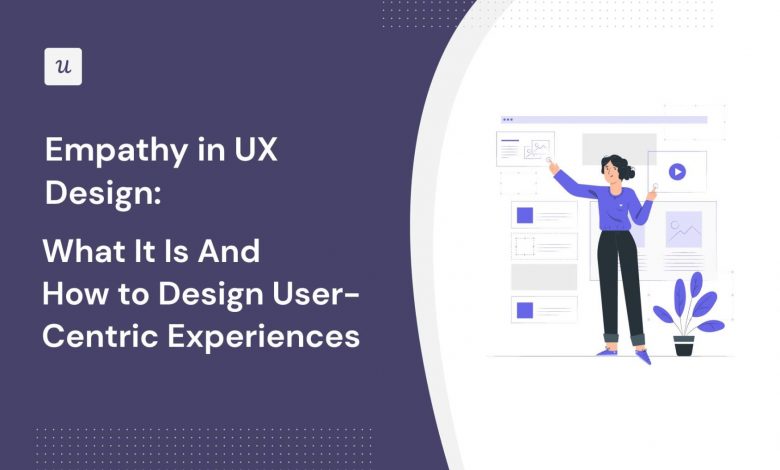The Role of Empathy in User-Centered Design

The Role of Empathy in User-Centered Design
Introduction
User-centered design (UCD) is an approach that prioritizes the needs and preferences of users throughout the design process. It focuses on understanding user behavior, goals, and emotions to create products or services that meet their expectations. At the heart of UCD lies empathy, which plays a crucial role in understanding the user’s perspective and designing with their needs in mind.
Why is Empathy Important in User-Centered Design?
Empathy allows designers to go beyond assumptions and delve into the world of users, gaining insights that drive meaningful design decisions. Here’s why empathy is essential in the user-centered design process:
1. Enhances User Understanding
Empathy helps designers gain a deep understanding of users’ needs, pain points, and aspirations. By placing themselves in the users’ shoes, designers can create user personas, conduct user interviews, and observe real-world interactions. This understanding enables designers to identify opportunities and design solutions that truly address user requirements.
2. Encourages Inclusive Design
Empathy helps designers consider the diverse range of users who will interact with their product or service. It enables them to design for different abilities, cultural backgrounds, and levels of tech-savviness. By incorporating empathy, designers ensure that their creations are inclusive and accessible to a wider audience.
3. Builds Emotional Connections
By empathizing with users, designers can tap into the emotional aspects of a user’s experience. They can identify the moments of frustration, joy, confusion, or delight that users may encounter when interacting with a product. Understanding these emotions enables designers to create experiences that resonate with users on a deeper level, fostering a stronger connection between the user and the product.
4. Drives Iterative Design
Empathy empowers designers to continuously improve their creations through an iterative design process. By considering user feedback and empathizing with their experiences, designers can identify areas of improvement and refine the design accordingly. This iterative approach ensures that the final product aligns closely with user expectations and delivers a seamless experience.
Frequently Asked Questions (FAQs)
Q1: How can empathy be incorporated into the design process?
Empathy can be incorporated into the design process through activities such as user research, user interviews, persona development, and user testing. These methods help designers gain insights into user behavior, motivations, and emotions, enabling them to design with empathy.
Q2: Can empathy be learned or improved?
Yes, empathy can be learned and improved. By actively practicing empathy, designers can hone their skills in understanding and connecting with users. Techniques such as empathy mapping and storytelling can be used to enhance empathy in the design process.
Q3: Are there any risks in relying solely on empathy in design?
While empathy is an essential component of user-centered design, it should be complemented with data and research. Relying solely on empathy without validating assumptions can lead to biased design decisions. Employing a balanced approach that combines empathy with user research ensures a more user-focused and effective design.
Conclusion
Empathy is the cornerstone of user-centered design, allowing designers to understand users’ needs, create inclusive experiences, build emotional connections, and drive iterative design. By incorporating empathy into the design process, designers can deliver products and services that truly resonate with users, resulting in better user satisfaction and overall success.
Remember, incorporating empathy into the design process helps create experiences that truly serve the needs of your users. Keep empathy in mind and watch how it positively impacts your design outcomes.



